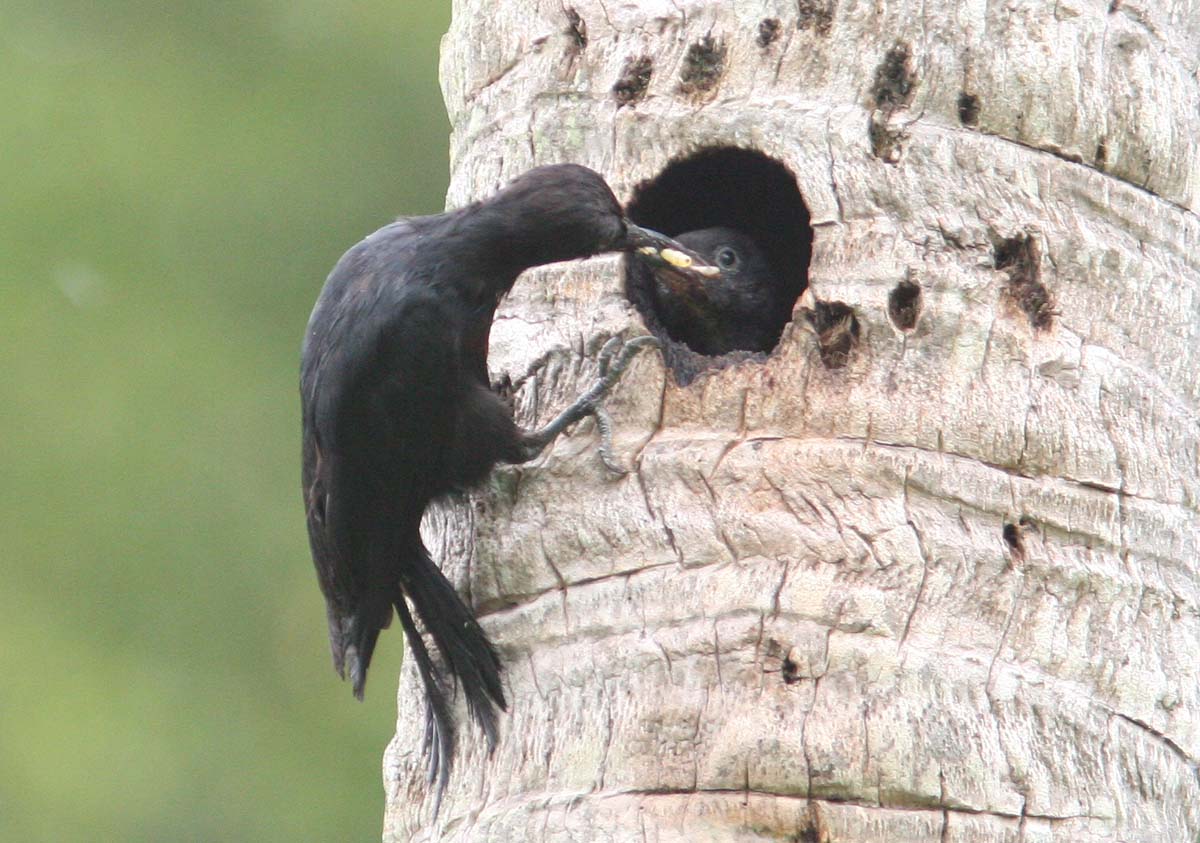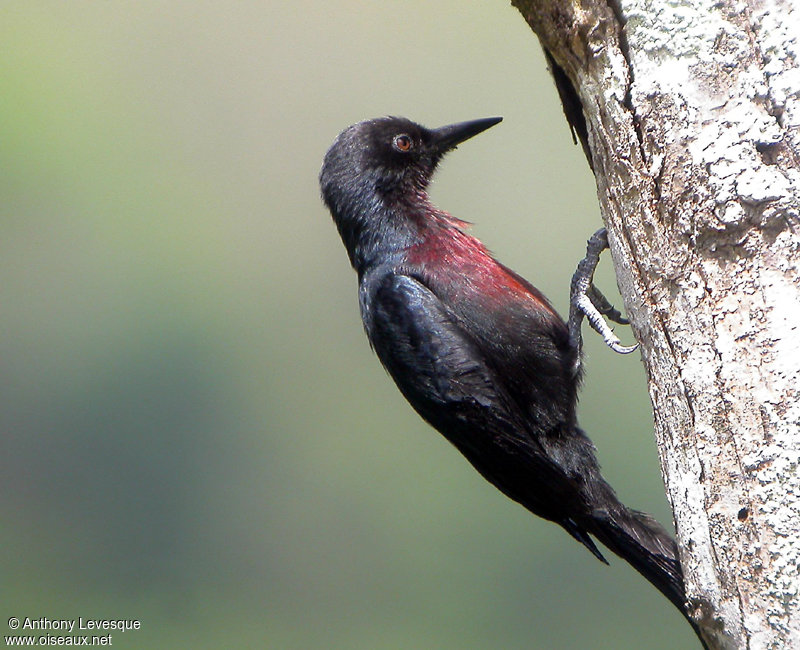
Melanerpes herminieri
SUBFAMILY
Picinae
TAXONOMY
Picus herminieri Lesson, 1830.
OTHER COMMON NAMES
French: Pic de la Guadeloupe; German: Guadeloupespecht;
Spanish: Carpintero de Guadeloupe.
PHYSICAL CHARACTERISTICS
9.4 in (24 cm), 3.1–3.5 oz (87–100 g); glossy black above and
black with dull red overtones below. Sexes alike. Juveniles less
glossy and with dull red-orange tinge below.
DISTRIBUTION
Found only in Guadeloupe in the West Indies; 75% of the
population of 10,000+ birds are on the more forested island of
Basse-Terre.
HABITAT
Semi-deciduous to evergreen forest, including upland, mangrove,
and swamp forest.
BEHAVIOR
Moves deliberately through the forest; returns frequently to
fruit-bearing trees.
FEEDING ECOLOGY AND DIET
Forages mainly on trunks and larger branches; diet includes insects,
fruit, and seeds.
REPRODUCTIVE BIOLOGY
Typically excavates nest cavity in the trunk of a dead stub;
nesting occurs February–August; both parents share incubation
of 3–5 eggs; incubation period 14–16 days; young fledge at
33–37 days.
CONSERVATION STATUS
The Guadeloupe woodpecker is considered a Near Threatened
species; clearcutting, conversion of forest habitats to
other uses, and removal of dead trees are major threats; introduced
rats may prey on eggs and nestlings.
Other popular Animals
Photo Gallery of - Guadeloupe woodpecker




 Animalia Life
Animalia Life